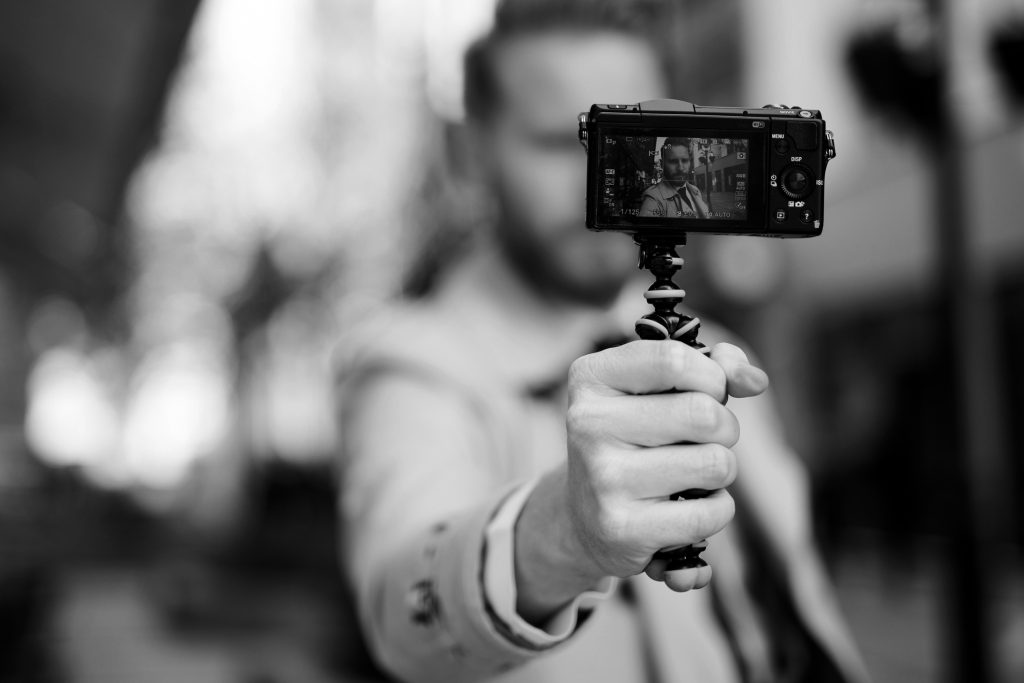INFLUENCER INVASION

Considered the fastest-growing online customer-acquisition method, influencer marketing has evolved as a disruptor to traditional advertising. Often considered the best way to increase customer engagement and sales, this strategy leverages social stardom by using people and platforms to push brand messaging, reach new audiences and drive conversions. An influencer’s value derives from their relationship with viewers, the content they create and the reaction it gets. According to Invesp, influencer marketing delivers 11x higher ROI than traditional forms of digital marketing; 94 percent of marketers who have used influencer marketing are sold on the results and 48 percent plan to increase budgets for it.
While a contemporary phenomenon to many, brand ambassadors date back to the 1700s, when Josiah Wedgwood enjoyed royal endorsements for his pottery. Tony the Tiger began pushing sugary cereal in the 1950s. Fast forward decades and you have a menagerie of personalities accessing and persuading large audiences with varying degrees of authenticity and reach.
Research shows that 84 percent of millennials don’t trust traditional advertising. What’s more, ad-blocking usage in the U.S. is at 40 percent on laptops and 15 percent on mobile, as consumers reject pop-ups and banners. When brands first turned to celebrities, models posing as ambassadors appeared across multiple channels. More recently, regular people rule. Ranging from age 7 to 70, convincing characters pervade Facebook, Instagram, YouTube, Snapchat, Twitter and anywhere else you can access a blog or a post. So how (and in whom) should one invest?
MEGA MACRO NANO NEW

With three in four Instagram users making purchasing decisions based on what they see in their feeds, and with influencer marketing contract value estimated to reach $2 billion in 2019, ad dollars are shifting. “You have to fish where the fish are,” says Phil Rist, co-founder and principal of Prosper Insights & Analytics, who encourages brands to reallocate ad spend to uncover the celebrity and non-celebrity influencers.
Brands themselves are becoming savvier, mapping out clear expectations and seeking personalities who will establish brand consistency and transparency with their consumers. We’ve witnessed epic fails (i.e. Oprah Winfrey extolling the virtues of Microsoft Surface, but from Twitter for iPad) as some have dropped large sums on partnerships that never added up, while others see possibility through the cyber clutter. There is real value in retaining strong influencers on the roster for long-term campaigns, event promotions and sponsored posts. The more recognizable the association, the better. According to Mike Froggatt, director of intelligence at relationship with the brand. It benefits everyone to have a long-term relationship, not a series of one-offs.”
Different types of influencers serve different purposes and provide different results. Depending on the campaign, you might need more than one:
MEGA INFLUENCER (100,000+ FOLLOWERS)
–Typically a celebrity with millions of followers and exposure. Engagement level is low as is the personal connection.
MACRO INFLUENCER (10,000 TO 100,000)
–Slightly more relatable and takes social media image more seriously.
MICRO INFLUENCER (1,000 TO 10,000)
–Topic experts or enthusiasts who are knowledgeable, passionate and credible with loyal followers. Interaction and engagement are high.
NANO INFLUENCER (500 TO 1000)
–Powerful and trusted source who knows many or most of his or her followers. The level of engagement and influence is very high.
While mega influencers have more followers, they are expensive and often disconnected from their audiences. Companies are turning to Microinfluencers, who are 4x more likely to get a comment or post. According to Troy Osinoff, author and head of customer acquisition at BuzzFeed, “You can attain the same or larger reach when spread across a handful of micro-influencers for a fraction of the cost, while gaining a more diverse, yet targeted audience.”
In the most recent (2018) CPC Strategy U.S. Influencer Marketing Report, trustworthiness exceeded exposure. Consumers care that an influencer is authentic, posts quality content, and is knowledgeable about a niche, but exposure can backfire as brands live in real-time and fall prey to conversations people are having about them. Here, actual consumers can become your strongest advocates. Take Macy’s, which has created the Macy’s Style Crew of more than 400 corporate employee ‘ambassadors’ who have deep connections with brands and share Macy’s-sponsored posts and videos. Vetted and approved, they are passionate about product and have significantly increased brand engagement. As a nod to authenticity, Macy’s controls the integrity of their message as well as the masses of viewers. The audience has no bots or fake followers, and unlike influencers who are paid per post, members of the style crew receive a percentage of driven sales.
ROI—RETURN ON INFLUENCE

There was a time when social media seemed an improbable method, but now that 81 percent of us have a media profile, it has become a full-fledged advertising medium—and the business of spreading the word can be profitable. You just need to look at influencer KPIs (key performance indicators), the measurable values—such as your site’s SEO (search engine optimization) quality, promotional codes and clicks. Going deeper into calculating campaign criteria, coupon codes are one of the L2 Research, “That’s the holy grail: relying on a stable of influencers is the easiest way to track response. Assessment can be as easy as adding up how many are redeemed and attributing them to an influencer campaign. Or you can use a tracking pixel (a tool that tracks web activity) to see who is generating the most visits and clicks. There’s also influencer marketing software that can track as well as tweak your strategy to boost ROI.
A THOUSAND NEW FOLLOWERS … FROM GUAM?
In a day’s worth of sponsored posts, nearly 50 percent are fakes, according to data from the anti-fraud company Sway Ops. “Influencer Fraud”—it’s a thing. And, as with other technology, there are those who game the system. But there is clarity in the quest for transparency. For example, we can evaluate the strength of an audience. One might think the larger the follower number, the more influence of the person. Not necessarily—if someone has purchased followers to make themselves look better or there is low level interaction. The engagement rate, the percentage of the influencer’s audience that responds to their content, is an available metric for ROI.
Then there is the quality of the audience, including fake influencers and bot followers. Trusted influencers often turn out to be fakes who can be identified through their profile, their followers’ profiles and their follower’s followers. Across multiple platforms (Facebook, etc.) there are “unnatural” communities growing. At Upfluence, influencer software analyzes profile data to look for red flags such as growth without account activity, or unaccountable bursts of new followers. Social Blade gives users access to a public database that can provide global analytics for any content creator, live streamer, or brand—including the number of followers
an influencer is gaining or losing. It has become easier to buy bots (automated software that generates a profile by scraping images and information from other sources), that spread by friending other users to increase their followers on social media. A bot can “like” and comment on posts with a specific hashtag or follow people with the hope they will follow them back. An audience of bots is neither engaged nor authentic—and can jeopardize your business’s integrity.
SEE-THROUGH SELLING

Are paid influencers trustworthy? This is a loaded question that has sparked debate in the categories of ethics, behavior and disclosure – all of which are evolving. According to a study by Bazaarvoice, a digital marketing company based in Austin, 47 percent of customers are tired of inauthentic content that is published by influencers. Not only can consumers recognize when influencer content is not in line with the brand message, according to the same study, 49 percent of people feel there should be restrictions placed on content created by influencers.
You might be interested to know that the same folks who govern antitrust and consumer protection legislation are online as well to ensure fair competition in the cyber marketplace. The FTC is concerned about truth in influencer marketing and requires influencers (and their brands) to announce their connections and to follow guidelines to that effect. When a blogger, vlogger (video blogger) or influencer posts something they have received for free, they must disclose it to the audience clearly and up-front to include captions or hashtags (such as #ad, #sponsored or #spon) at the start of a post (not buried within a swarm of hashtags, or after the visible cut-off). If an influencer has been paid to create a video, they must reveal that in the title or caption. The FTC is watching, as evidenced by letters sent to over 90 influencers and marketers last year to remind them of the disclosure rules. It pays to heed, as violators of sanctions can face fines or legal action.
CONNECT AND COLLECT
Even if the realm of influencer marketing evokes a bit of the Wild West, brands can approach this powerful tool that is still settling into its cyber-frontier—with integrity. Moving forward, influencers should be included in the creation of a campaign and not just actors for pay. When influencer marketing works, it pays off. Whether coming from a guru or a grandpa, make sure the influencer is germane to your brand.


